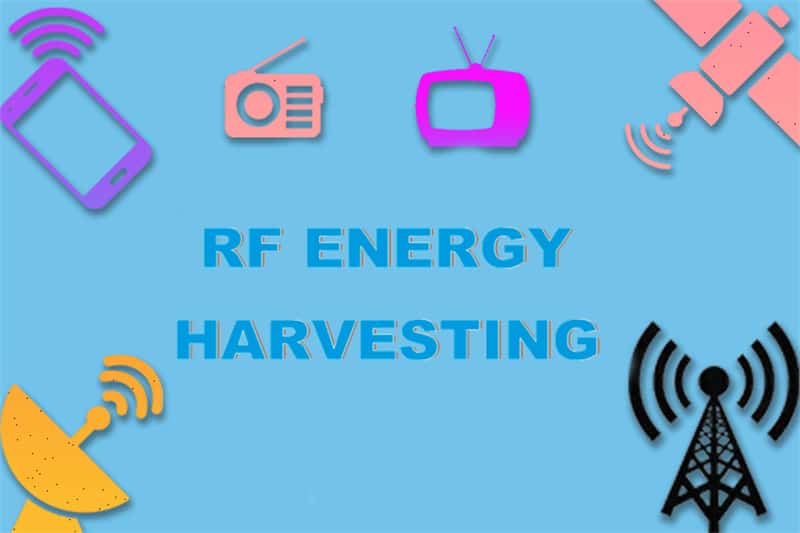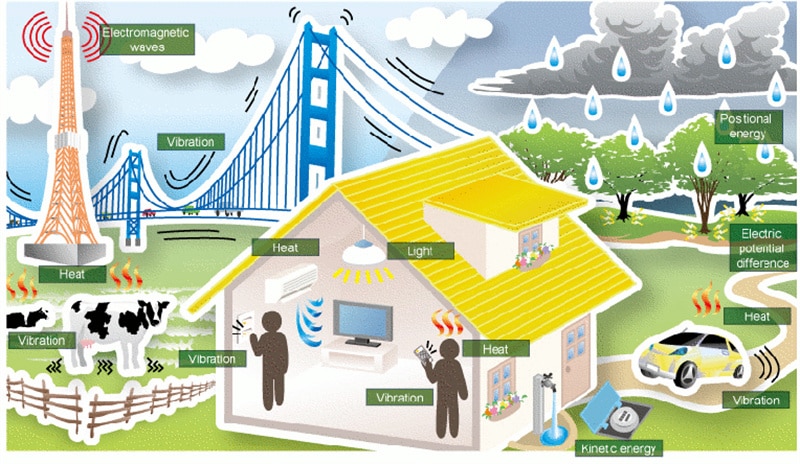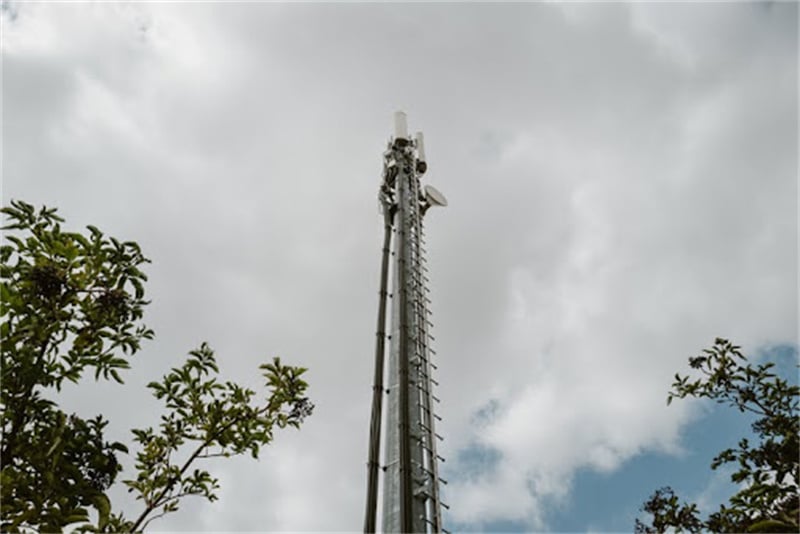Energy harvesting involves processes designed to utilize the energy within the atmosphere to power portable devices. There are many ways to harvest energy, with the most common being through radio frequencies, the sun, and even through wind. Today, the use of RF energy harvesting systems has grown to become the most popular option because it is a more sustainable approach.
RF energy harvesting involves capturing RF electromagnetic waves and converting it into electrical energy. This is achieved via the use of rectifiers and antennas that are designed to capture RF and microwave signals, rectify and transform the signals to a direct current power source.
The energy produced can then be applied as a power source for small electronic devices. Alternatively, the energy can be stored within specially designed storage systems. RF energy harvesting proves to be a solution for powering IoT devices, wireless sensor networks, and a wide range of low-power electronics.
Despite how promising RF energy harvesting seems, it’s worth noting that its operating range is quite limited. With that, there’s a need for the device that needs the power to be placed close to the RF broadcaster. This is because as the distance between the RF source and the device increases, the efficacy of RF energy harvesting decreases. Another thing to note is that there’s a need for a uniquely designed antenna to transfer or receive the RF signals.
Components of RF Energy Harvesting

The main component of RF energy harvesting systems is the rectenna, which is also known as the rectifying antenna. This special component is made up of an antenna, matching network, storage device, rectifying circuit, and RF input filter.
RH energy harvesting systems are designed to function on a wide spectrum of frequencies to offer ambient RF energy. The frequency bands they can operate on include Digital Television (DTV) that uses 550 to 600 MHz frequency band to broadcast DTV signals and replace analog transmission for better quality. They can also operate Long-Term Evolution (LTE) that uses the 750 to 800 frequency band for application in 4G mobile data services.
Universal Mobile Telecommunication Systems, GSM-1800 and GSM-900 are also on the ambient frequency list. Basically, the Universal Mobile Telecommunication Systems utilizes the 2,140 to 2,200 MHz band to deliver 3G mobile services like internet access, multimedia messaging, and video calling. The GSM-1800 uses the 1,850 to 1,900 MHz range to deliver 2G band for use in mobile communications. On the other hand, GSM-900 operates within the frequency band range of 850 to 910 MHz.
Techniques and Advantages of RF Energy Harvesting
There are different techniques that are used for RF energy harvesting, and they include RF energy harvesting from dedicated RF sources, RF energy harvesting from ambient RF sources, and RF energy transfer between mobile devices.
RF energy harvesting that is done from dedicated sources allows for high power values, unlike the other options available. Basically, circuits that are used for RF energy harvesting from dedicated sources can generate powers as high as 50nW/cm2. However, it’s important to note that this power range comes with shadowing, fading, energy dissipation, and path loss. All of these are challenges associated with this method of energy harvesting.
RF energy harvesting from ambient sources is grouped into two categories: dynamic and static sources. The dynamic sources are transmitters that broadcast RF regularly such that it’s not monitored. Harvesting from such sources requires the use of intelligent wireless energy-harvesting systems that can continuously monitor potential opportunities to harvest energy. On the other hand, the static sources are more stable, but they are not amplified. Examples of these sources include television, mobile base stations, and broadcast radio.
The third method involves RF energy harvesting between mobile devices to allow for the transfer of stable power between nearby devices. These devices utilize time-switching and power-splitting techniques to operate without the need for modifications. Basically, the approach enables the use of an antenna array or shared antenna for information reception and energy harvesting.
Advantages of RF Energy Harvesting Systems
Some key advantages of RF energy harvesting systems over solar, vibration, and wind include the following:
- Harvested energy offers relative predictability and stability, ensuring long-term performance over a fixed distance.
- The systems demonstrate the capability to facilitate and regulate energy transfer over a longer distance.
- The system levels vary across different network node’s locations. This is because the RF energy harvesting generally relies on the proximity of the RF sources.
Limitation of RF Energy Harvesting
In addition to these advantages, there are certain limitations to note. The first is the fact that they are limited by the amount of power they can transmit. Also, the distance between the receiver and the transmitter restricts the efficiency of the RF energy harvesting system. Another limitation is the dependency on external sources, and this is because they are prone to physical obstacles, atmospheric changes, and radio wave source uptime.
Applications of RF Energy Harvesting

There are many ways RF energy harvesting is applied today, and here are some of the common applications:
- The Internet of Things
- Smart lighting applications
- RF tags for shopping
- Battery-less power source
- Power source for smart sensors
- Smart switches for home automation
- Recharging devices
The main reason why it has gained favor for these applications is due to the ease of implementation, and the fact that it has a simple design and is cost-effective.
Conclusion
The emergence of different technologies like the Internet of Things and many more all call for a robust and efficient source of energy that can connect multiple sensors and smart devices for diverse applications. Also, the need for long-term reliable and sustainable energy sources cannot be overemphasized, especially for use on efficient systems.
RF energy harvesting is an area that currently provides an effective solution to meet these varying needs. Basically, it is currently an area for future development, with the potential to deliver effective solutions that can be applied within the medical, IoT, industrial, and even for a wide array of smart home applications.
